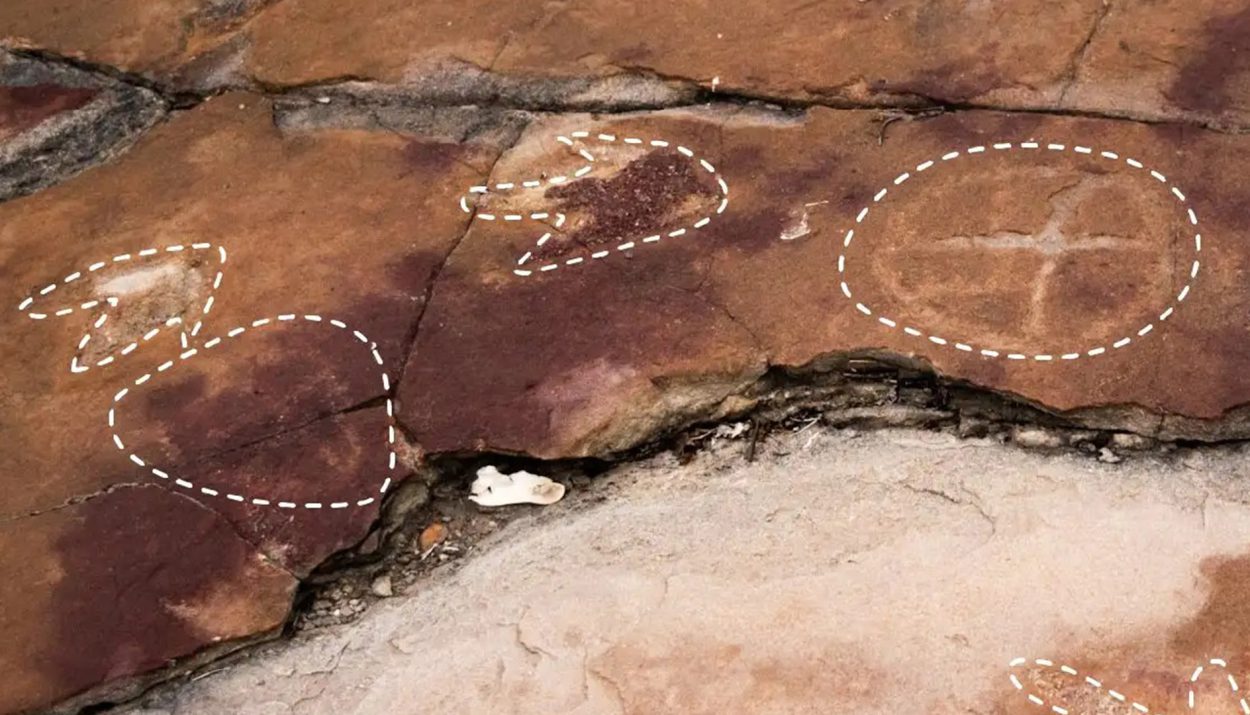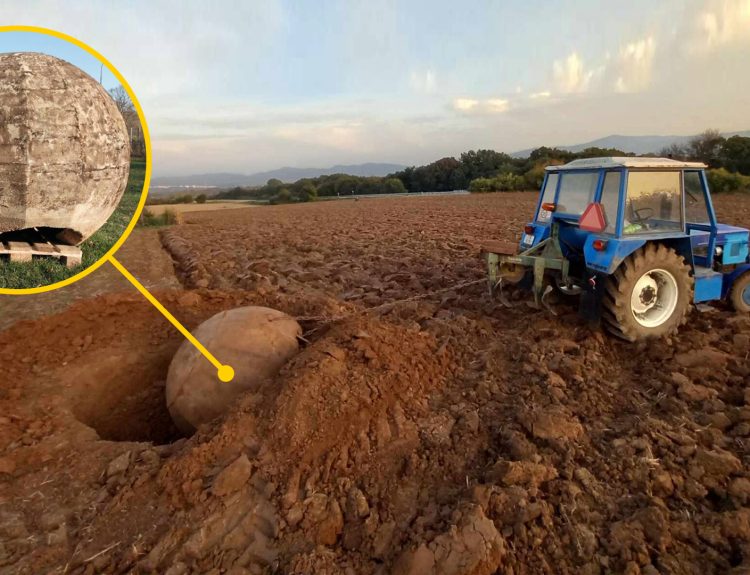Our ancient ancestors surely must have stumbled upon the fossilized bones of dinosaurs from time to time. Have you ever wondered what they made of these? Were they aware that their world was once inhabited by “terrible lizards”?
According to symbols carved on rocks, prehistoric humans living in Brazil had some knowledge of dinosaurs and realized that the footprints they left behind were unique. Researchers believe that the petroglyphs carved near fossilized dinosaur tracks show that our ancestors were intrigued by them.
Petroglyphs Alongside Dinosaur Tracks
In 1975, archaeologists came upon ancient rock carvings at Serrote do Letreiro, a site in Paraiba at the eastern tip of Brazil. Along with the rock carvings chiseled by ancient humans, they observed the fossilized tracks of dinosaurs.
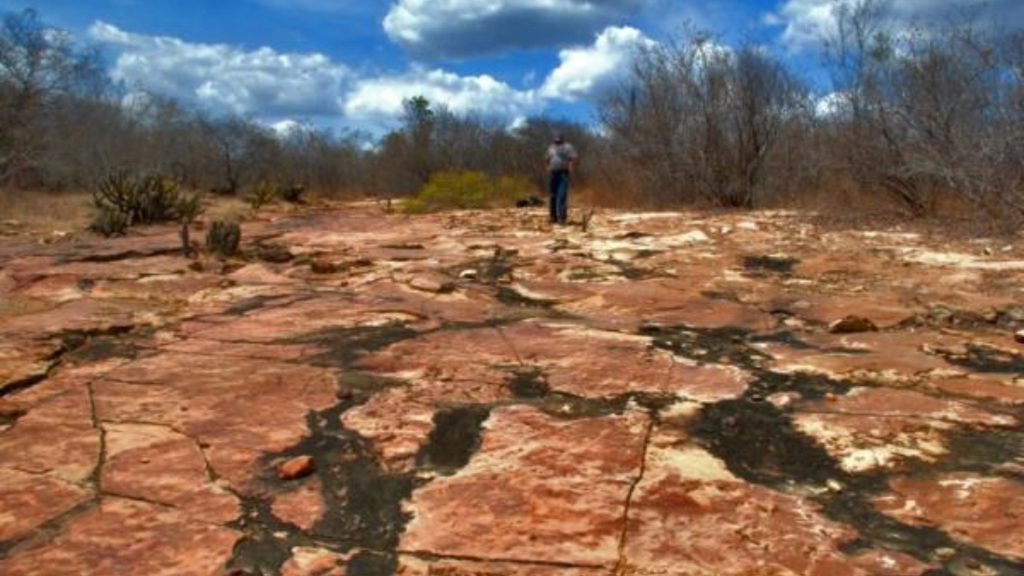
Researchers, however, have recently revisited the site. Using new technology, including drones and remote imaging, they have discovered additional carvings. Based on this new data, scientists feel certain that the carvings relate to the footprints.
Fossilized Dinosaur Footprints
When prehistoric dinosaurs walked on wet terrain, such as riverbeds and coastal plains, they left their tracks behind. The soil then dried out, hardened, and was preserved under layers of sediments. This was not a unique phenomenon.

Fossilized dinosaur tracks have been found around the world. By studying them, scientists have gleaned information about dinosaur behavior, movement, social groups, and migration. As we see in Brazil, the dinosaur tracks were visible to early humans. And they were naturally curious about them.
Early Humans Were Curious
Leonardo Troiano, the co-author of the article on the findings on the rock carvings that appeared in Scientific Reports, is an archaeologist with the Institute of National Historic and Artistic Heritage of Brasilia. He explained, “People usually think that Indigenous people weren’t aware of their surroundings or didn’t have any kind of scientific spirit or curiosity.”
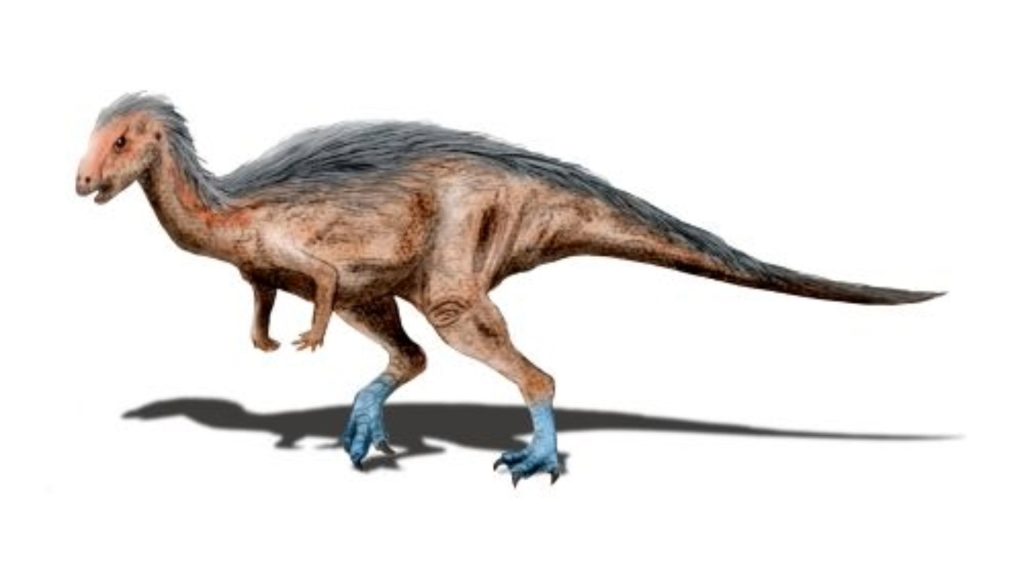
“That’s not true,” he said. “It’s very clear that they were interested in the footprints. We’ll never know if they knew about dinosaurs, but it is clear that they were curious about the prints and thought they were meaningful in some way.”
Petroglyphs and Dinosaur Tracks
The site at Serrote do Letreiro is not the only one in which ancient petroglyphs were carved near dinosaur prints. According to Troiana at the other authors of the study, the Brazilian site is unique in that there is an obvious association between them, as though the carvers were responding to the dinosaur tracks.
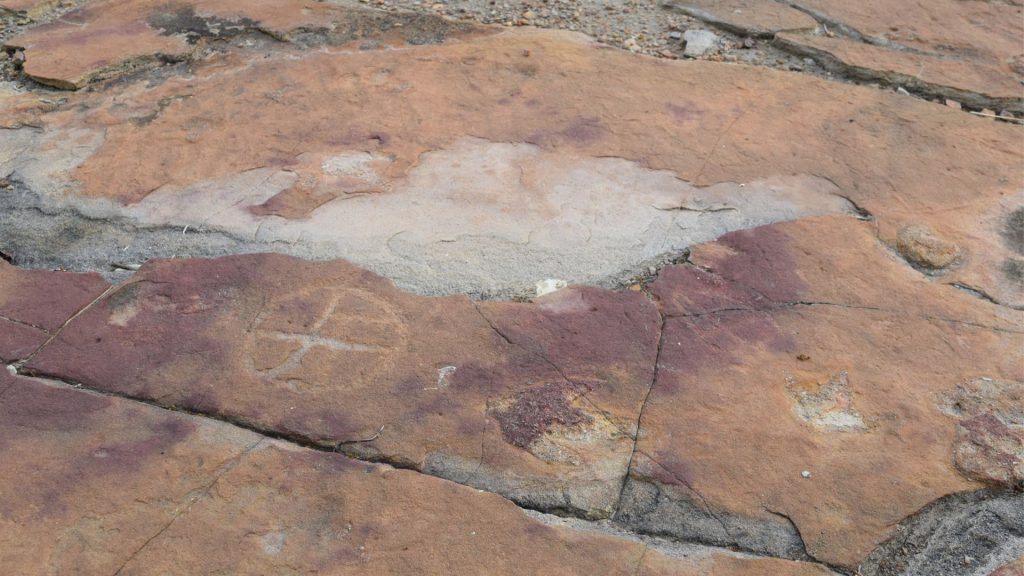
As the authors detailed in their report, the association between the petroglyphs and the dinosaur tracks has the potential to impact cultural studies, in addition to archaeology, anthropology, and paleontology.
The Dinosaur Tracks
The dinosaur tracks on the rocks at Serrote do Letreiro belonged to dinosaurs that lived in the Cretaceous Period. The period ended about 66 million years ago.

The tracks were made by three different types of dinosaurs – ornithopods, sauropods, and theropods. Perhaps, as the researchers speculate, early humans believed the three-toed tracks were made by large, native birds that were native to the area.
Some Tracks Were Unfamiliar
It is easy to see how some of the tracks could have been misinterpreted as being made by large, flightless birds, the sauropod prints couldn’t be so easily explained. These tracks would have been unlike any animal tracks the indigenous people were familiar with.
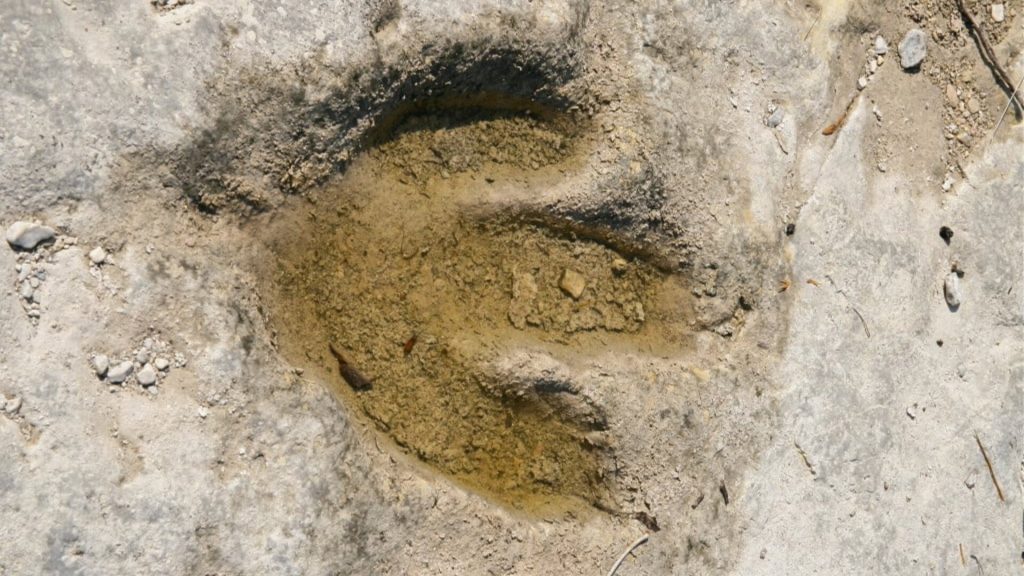
From the engravings on the rock, it is clear that the dinosaur tracks were unusual enough for early humans to make engravings that connected to them.
A Variety of Symbols
The petroglyphs found with the dinosaur tracks show a variety of symbols. The style of the carvings is also varied, indicating that they were made by several different people, maybe over a long period of time.
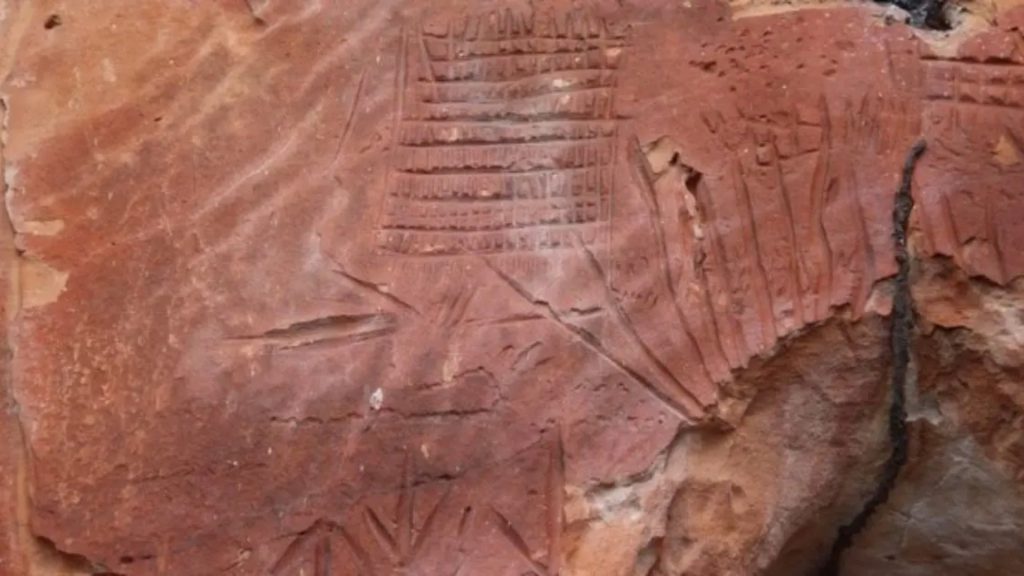
While some of the symbols are a mystery, others look like plants. In addition, there are geometric symbols, like circles, squares, lines, and rectangles. Some of the petroglyphs, as Troiano noted, could represent stars.
When Were the Carvings Made?
As the study in the journal Scientific Reports explained, the exact age of the engravings is not known because stone cannot be radiocarbon dated. Archaeologists, however, have located ancient burials in the vicinity.
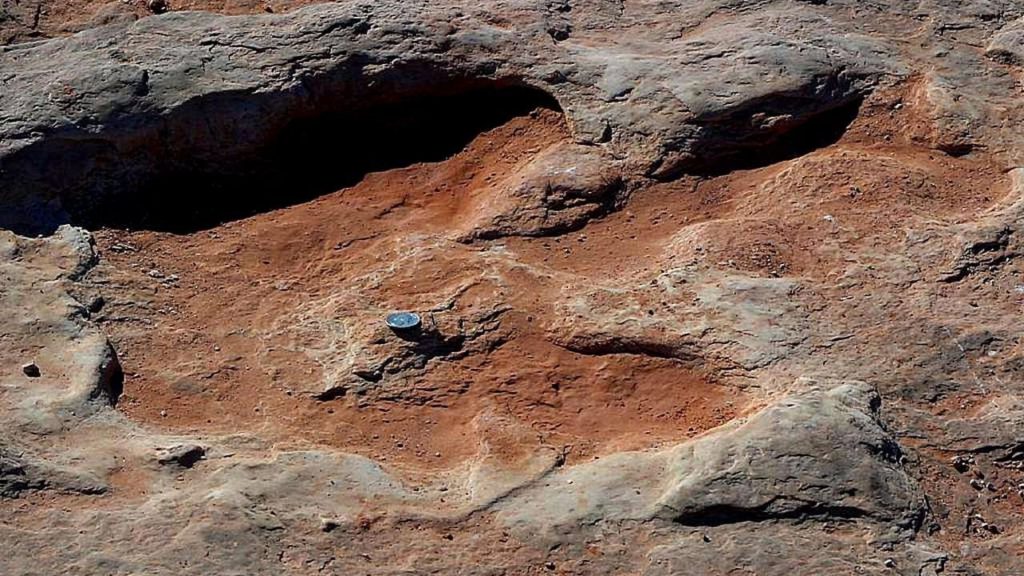
An analysis of the burials date between 9,400 to 2,620 years ago. It is impossible to say with certainty that the burial sites belong to the same people who carved the petroglyphs, but it does tell the researchers that indigenous tribes were living in the area.
Rock Carvings Were Used to Record Important Information
Troiano noted that the indigenous people “were probably living in small communities, using natural rocky shelters that are very abundant in the area. Brazil is like the Outback in Australia — it’s really hot and there’s no shade.”
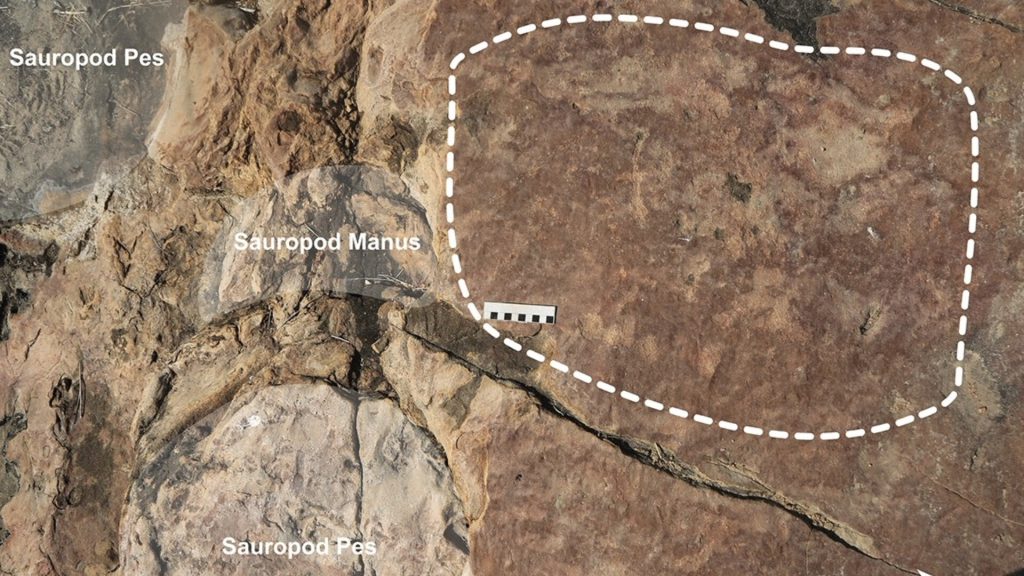
“It’s not easy to stand there and carve the rock,” he continued. “It requires a lot of effort, so when they picked this location, they were being very intentional. They could have used so many other rock outcrops in the surroundings, but they chose this one.”
A Gathering Place?
Troiano’s theory is that Serrote do Letreiro served as a gathering place for the different tribes living in the region. “I think rock art creation was embedded in some sort of ritual context … people gathering and creating something, perhaps utilizing some psychotropics. We have a plant called jurema, which is hallucinogenic, and it’s still used to this day.”

“We can speculate that people were using it in the past as well because it’s so abundant and common in the region,” he added. “I think they were interested in what the footprints represent, and I suppose they identified them as footprints. They noticed it wasn’t random.”
The Petroglyphs Are “Intentional”
According to Troiano, the petroglyphs were “intentionally” made. He explained that they are close to the dinosaur prints, but do not overlap them. It was as if the carvers took care to not mar the prints.
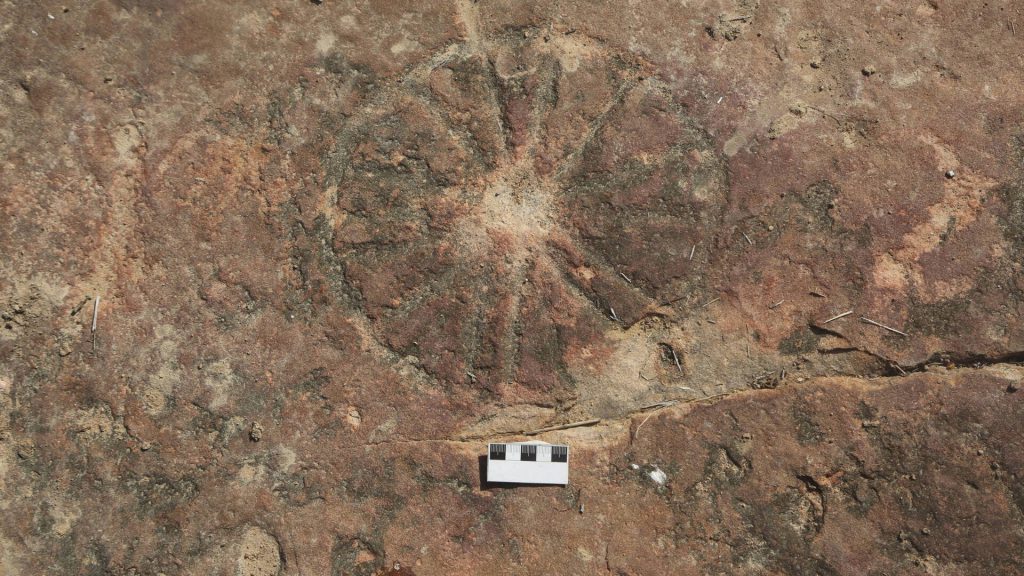
To Troiano, this shows that the carvers made their engravings with “intention and thoughtfulness.” He noted that the symbols “all seem to be abstract, and if they represented something to the people who made them, we don’t know what it is.”
A New and Unique Area of Study
While researchers have studied prehistoric dinosaur fossil tracks and others have studied ancient human petroglyphs, a study of the direct link between the two is unusual. It represents a new and unique area of study. Associate professor of archaeology at the Jagiellonian University in Krakow, Poland, Radoslaw Palonka, was not involved in Troiano’s study, but has conducted similar research on petroglyphs.
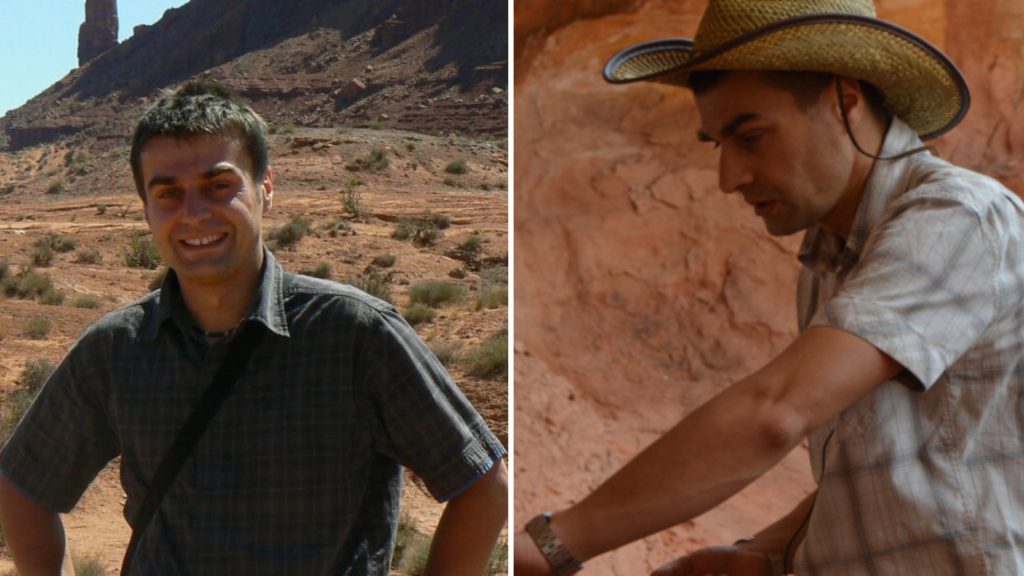
He stated, “The fact that the locations of the rock art panels have been chosen specifically is shown by, among others, the fact that representatives of the communities that created rock paintings or petroglyphs often placed them very close to older images left by other cultures.”
Fossils as Religious Iconography
University of Tennessee professor of anthropology, Jan Simek, also weighed in on the report. She said, “The paper provides an interesting new example of how ancient people observed and incorporated fossils on the landscape into their religious experiences and interpretations.”
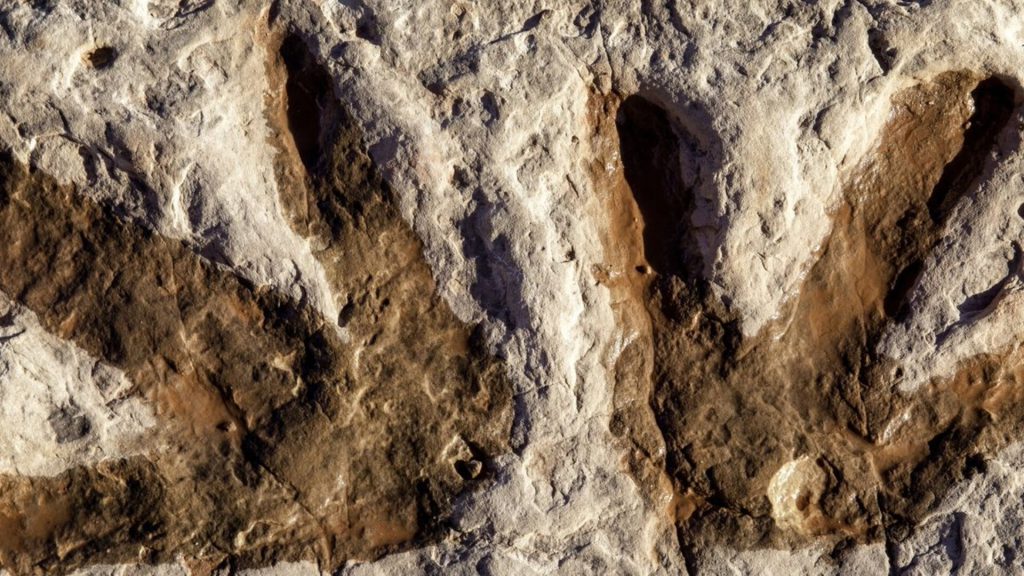
She added, “Stanford University historian of science Adrienne Mayor has shown how ancient Greeks and Romans saw fossils as evidence of giants and monsters from their own mythologies and how indigenous North American peoples saw their origin narratives in the fossils they observed scattered across their landscapes.”

